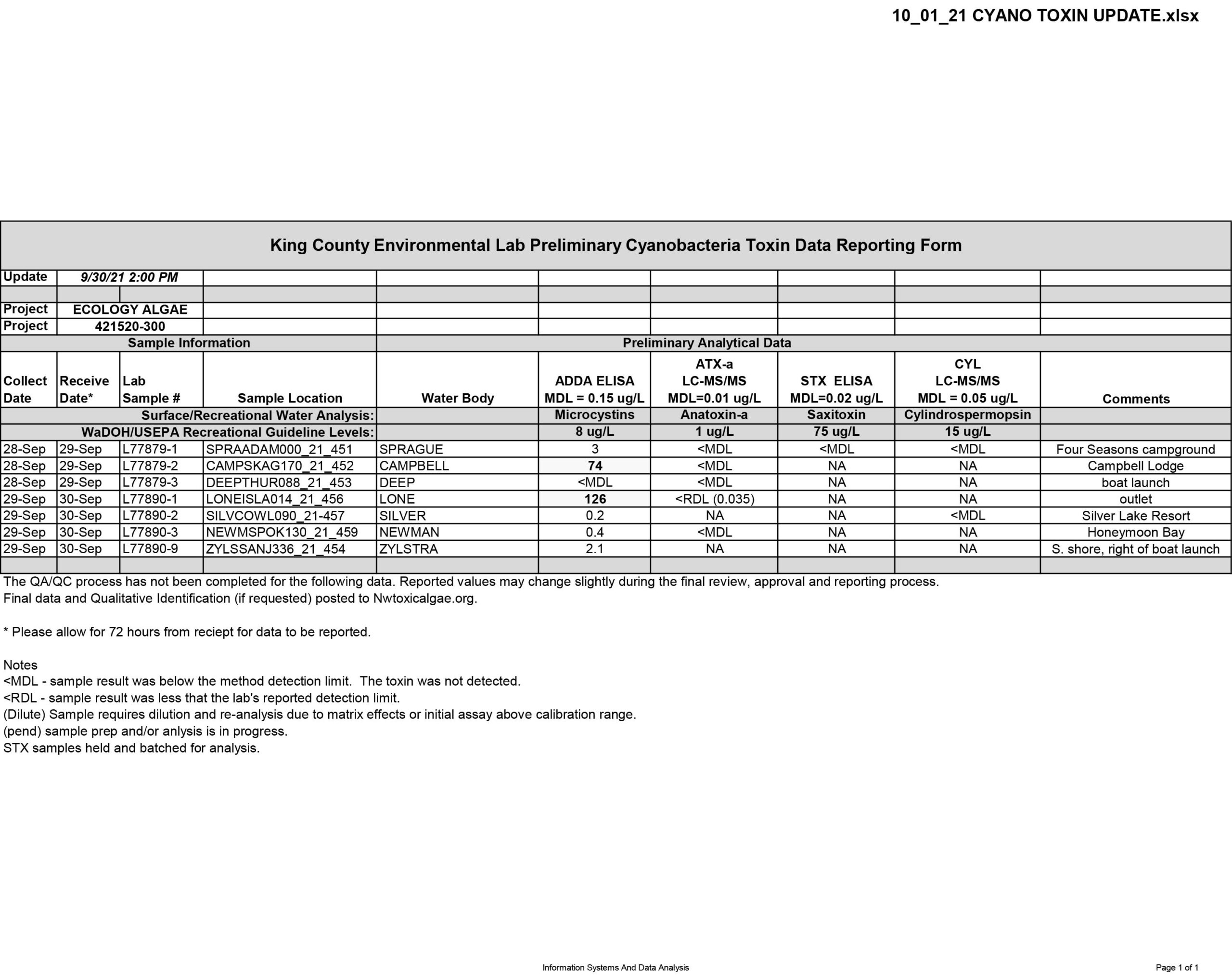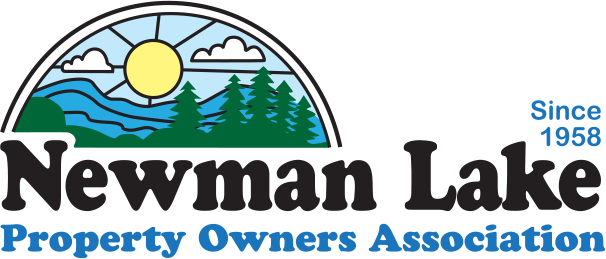Algae
9/29/21 Newman Lake Toxic Algae Update – Microcystins Concentration Below DOH Recreational Limit
Hello Newman Lake Community,
The algae sample from Wednesday, 9/29, at Honeymoon Bay came back below the recreational concentration limits for Microcystins. (see report below) However, the warning is still in place for toxic algae at Newman Lake. Avoid areas with green or blue scum and continue to send photos of suspected blooms to 509-867-8017.
Stay safe,
Spokane County Public Works | 1026 W Broadway Ave | Spokane, WA 99201

Algae Blooms at Newman Lake
We see algae blooms at Newman Lake usually in mid to late August every year and they are getting worse every year!
WHY do we see algae blooms at NL?
- Newman Lake is a very shallow lake, and shallow lakes are more apt to have algae problems. Check out this link that helps explain it: CLICK HERE
- In addition, sediment is the main transport of phosphorus into Newman Lake, so the more sediment that comes in through the various watersheds (most prominent is Thompson Creek, where there is a project slated for 2021, if grant funding is secured. Read about that project CLICK HERE), the lake depth will incrementally decrease over time as well, which circles back to the “shallow vs deep” lake scenario.
- The other big phosphorus contributor – humans; with more development, and no change in regulations, human impact: older, failing septic systems; manicured and fertilized lawns versus natural vegetation buffers at lakeshore edge; shoreline erosion – contributes more sediment to lake – from boat activity, for example, all have big impacts on lake health. The more shallow the lake, the bigger that impact.
- Eutrophication is a normal process that all lakes go through, but humans do speed that process up. Here is what eutrophication is: CLICK HERE for more info
- CLICK HERE for additional information about lake ecology.
CLICK HERE to find out what you can do to help water quality at Newman Lake!
What are Cyanobacterial Harmful Algae Blooms (CyanoHABs) in Water Bodies?
Certain environmental conditions in water bodies can intensify algae growth, causing algal blooms. Blooms with the potential to harm human health or aquatic ecosystems are referred to as harmful algae blooms or HABs.
In freshwater systems, cyanobacteria (also called blue-green algae) are microorganisms that can produce HABs. Some cyanobacterial HABs, or cyanoHABs, can produce toxins. CyanoHABs and their toxins can harm people, animals, aquatic ecosystems, the economy, drinking water supplies, property values, and recreational activities, including swimming and commercial and recreational fishing.
More detailed information from the EPA: https://www.epa.gov/cyanohabs
Washington State Toxic Algae Website: https://www.nwtoxicalgae.org/
1) How to identify HABs – A 7 minute video that teaches you how to identify HABs from other lake-life vegetation.
2) Harmful Algal Blooms – This 6 minute video goes over: what HABs are; how they occur; and what we can do about them. Visit LOVE NL to see how you can help Newman Lake water Quality.
Pets and Algae Blooms
Reports of dogs getting sick or dying after swimming in ponds, lakes, and streams are more common during the summer months.
Please be aware that dogs can be exposed to toxins by skin contact with water contaminated with cyanobacteria or toxin(s), when swallowing water while playing in the water or by licking the water off fur or hair. If you suspect your dog has been exposed to a toxic algal bloom, please seek immediate veterinary care.
Below are links to useful resources on what harmful algal blooms are, how dogs can be affected, and how to protect you pet from toxins.
– EPA’s Video Protect Your Pooch from Harmful Algae Blooms
– CDC’s Reference Brochure for Veterinarians
– EPA’s website How to keep your dog safe from Toxic Algae
